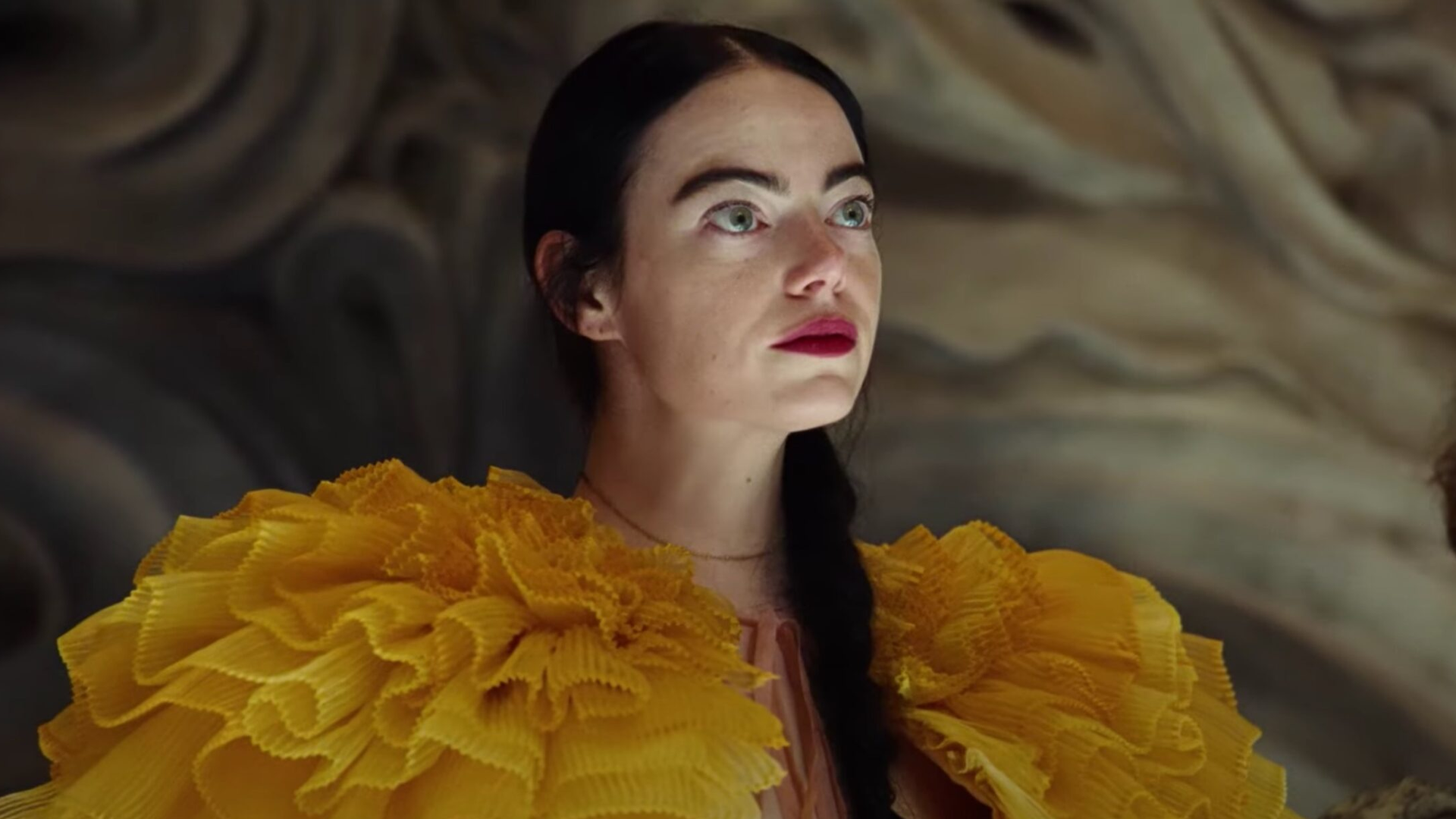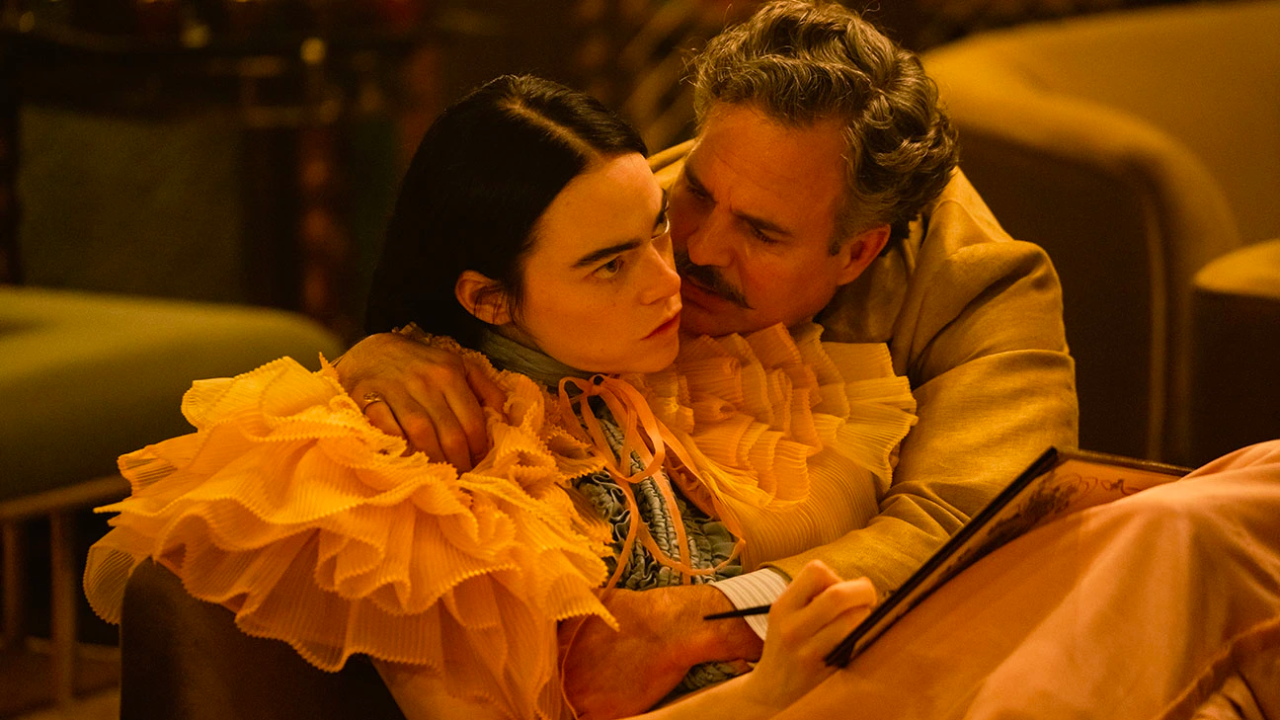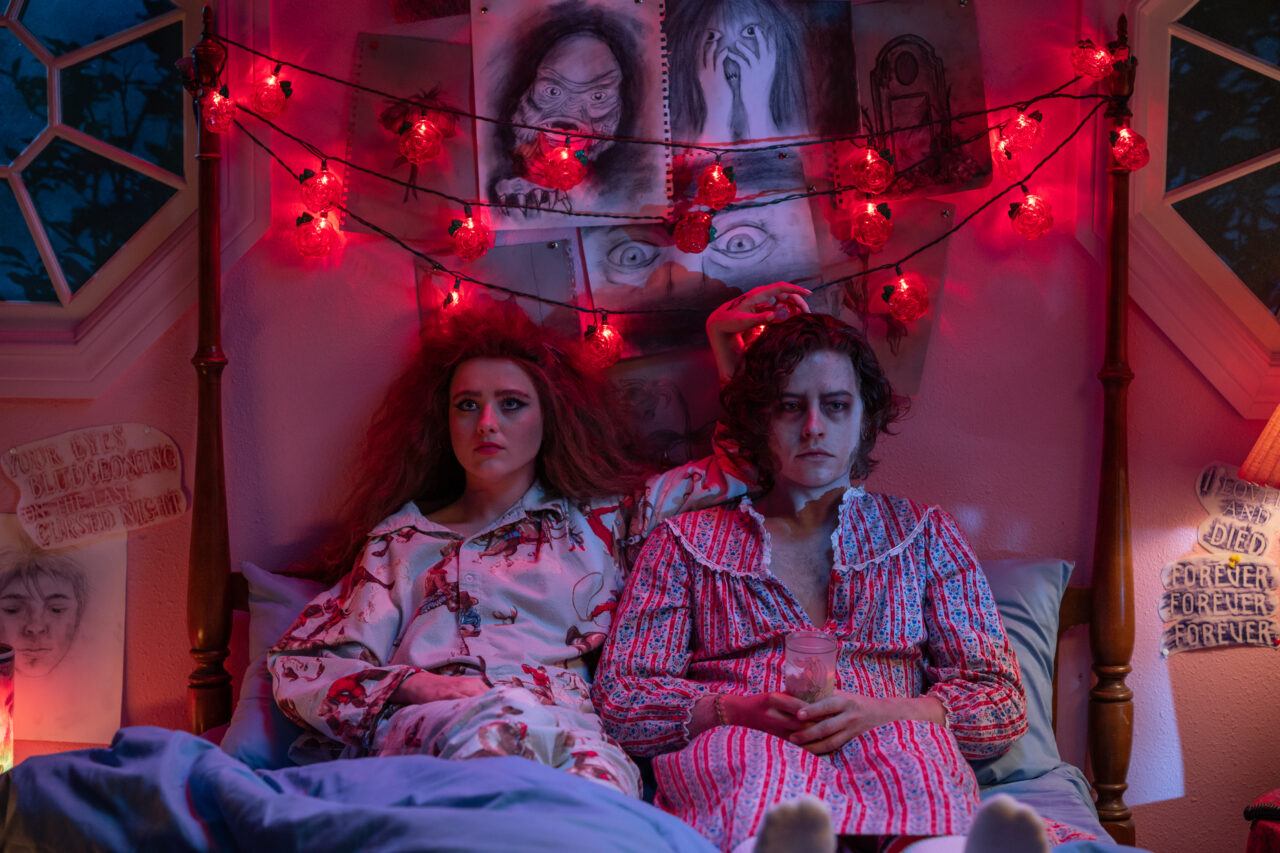How to Live in a Dying World: Why We Love ‘Frankenstein’ So Much

At the risk of stating the obvious, creation and destruction are inextricably linked. They’re mutually constitutive. Horror knows this. As ostensible opposites in the struggle between life and death, creation and destruction rely on one another for meaning. In the face of the destruction we encounter daily, from climate change to fascism, acts of creation can feel life-affirming, or even, for some of us, like the only thing that makes any of this worth it. At the same time, our avenues for creation outside of the reaches of capitalism have dwindled to the point of near-nonexistence, and our media landscape, while theoretically a venue for creativity, tends to inspire cynicism with its emphasis on profit and safety, from a marketing perspective, of endlessly recycled intellectual property.
Enter the current wave of Frankenstein adaptations. This is hardly the first time we’re seeing Mary Shelley’s pioneering work of gothic literature reimagined ad infinitum for the silver screen, with the novel’s signature intertextuality proving particularly fertile for the kinds of revivals and recombinations we might associate with the Creature itself. In fact, the reality of the wealth of Frankenstein-inspired films is certainly not unrelated to the question of IP.
Also Read: Frankenstein: The Most Human of the Monsters
The historical prevalence of Frankenstein adaptations can be attributed, at least in part, to the novel’s status as belonging to the public domain and the familiarity and malleability of the questions about creation, monstrosity, science, religion, and the pursuit of knowledge at its center. Over the course of the last year alone, we’ve seen the release of birth/rebirth, The Angry Black Girl and Her Monster, Santastein, Poor Things, and Lisa Frankenstein. Upcoming Frankenstein projects from Guillermo del Toro and Maggie Gyllenhaal have also been announced, with Jacob Elordi, the hottest lumbering freak of the moment, slated to play the monster in del Toro’s adaptation.
In August 2023, I wrote a piece making the case for understanding this current wave of Frankenstein adaptations within the context of mass death. From the ongoing COVID-19 pandemic, to the continued reckoning with and resistance to the state-sanctioned murder of Black people, to the increased (and tellingly biased) US news coverage of genocide, especially in the case of Palestine, we are being faced with death on a horrific scale, both domestically and globally. When inundated with all of this destruction and called on to take action rather than to accept it, what place do acts of creation occupy–acts of creation that take the form of not only works of art, but also the building of coalitions, or other ways of bringing forth new possible worlds?
Also Read: The Best Frankenstein Movies To Watch After ‘Poor Things’
More to the point of this essay, what do we create in times of crisis, what purposes does the impulse to create serve, and how do these creations help us understand the sociocultural landscapes in which we are embedded?
It is no less true now than it was last August that confronting mass death is part of our daily lives, and that, within this context, engaging with media that questions the permanence of death and explores the feedback loop between creation and destruction might feel like an antidote to hopelessness. If recent Frankenstein narratives like Poor Things and Lisa Frankenstein rightly caution us against the unintended consequences of creation, they also affirm the value of pursuing pleasure and discovery in the face of death and destruction.
Also Read: ‘Mary Shelley’s Frankenstein’ Is Given New Life in 4K
Poor Things’s script, adapted from the 1992 book by Alasdair Gray, is very literal in its exploration of acts of creation both wonderful and horrifying, and its fascination with lineages serves the same thematic aims. Godwin (Willem Dafoe), or God, as his creation conspicuously calls him, exists at the center of the film’s constellation of ideas about creation, monstrosity, and familial legacies, serving within the narrative as the mouthpiece for the basic plot. To add another wrinkle, Godwin also happens to be Mary Shelley’s original family name, positioning this mad creator even more explicitly as an heir to the legacy her book set into motion.

The film opens on a full-color shot of a woman facing away from the camera and jumping off a bridge, before switching to the black and white cinematography that characterizes the earliest parts of the narrative. Later, Godwin provides context for these opening images: he informs Max McCandles (Ramy Youssef) that this pregnant woman’s suicide was something of a miracle for him, allowing him to take his scientific experiments with combination and reanimation to the next level by replacing the dead woman’s brain with the brain of her fetus. As he explains in voice-over, it would have been cruel to simply reanimate her, given that she had chosen to end her life rather than continue to live according to the dictums of “polite society”.
Also Read: Celebrating Weird On The ‘Lisa Frankenstein’ Red Carpet
This act of creation—made possible by an act of self-destruction—is the film’s inciting incident. It results in the strange mixture of childlike un-self-consciousness and adult interests in sex and scientific discovery that characterizes the film’s protagonist, Bella Baxter (Emma Stone). Godwin’s description of the events that brought Bella into being in her current form emphasizes not only that he thought he was doing something good by reanimating her with the conscious omission of her previous suffering, but also that he created a closed loop of family lineage, in which Bella is at once her own mother and her own child, creator and creation in one.
When understood in tandem with Godwin’s own family history, in which his father conducted elaborate experiments on him as a child, his thwarted attempts to continue this legacy of creation, control, and experimentation read as a contradictory effort to right the wrongs done to him while continuing his father’s tradition of claiming ownership over the life and body of someone else. In this way, we might understand the film as proffering a relationship between creation and monstrosity, wherein all acts of creation contain the potential for monstrosity.
Also Read: ‘Lisa Frankenstein’ Is This Generation’s ‘Edward Scissorhands’
More to the point, the film is highly invested in Bella’s acts of self-creation, her journey of self-discovery through pleasure (mainly accessed via sex and travel) as scientific instruments that create calibrated responses. She doesn’t have the usual hang-ups that plague adult women of this fantastical pseudo-Victorian society—or of our own contemporary one. She exists unconditioned by social expectations, which means she is free to pursue her own pleasure, often at the expense of others. This is not to say that she should be concerned about destroying the life of Duncan Wedderbern (Mark Ruffalo), who throughout the film is alternately a creepy cad and a simpering sod (to put it nicely), or even that she owes it to Godwin to live up to his expectations for her.

This sets up another parallel with the original story. If to create is to go against God, in Poor Things, Bella’s attempts to create a version of herself that escapes patriarchal control and capture go against Godwin. This refusal to conform to any man’s vision of her is one of the most satisfying things about Bella’s journey. But, her trajectory does seem to raise questions about the individualism inherent in Bella’s wresting of a good life out of her previous demise.
At her most altruistic, and the film’s most weirdly racist, she discovers that pain and poverty exist in Alexandria just underneath the opulence she and her fellow travelers are enjoying. She sobs in despair before throwing money at the problem and moving on. In fact, the audience knows the money will never actually reach its intended recipients, which feels like it could have almost been a critique of the ways in which whiteness seeks to absolve itself from culpability through meaningless gestures of goodwill if it had only been explored further.
Also Read: ‘Lisa Frankenstein’ Writer Diablo Cody Has A Message For The Weirdos [Watch]
Bella, now employed at a Parisian brothel, begins to attend socialist meetings with her colleague and lover, Toinette (Suzy Bemba), delivering the very quotable line “we are our own means of production” at a distraught and increasingly unwell Wedderburn. But we as an audience don’t really see these ideas about gendered labor and solidarity come to fruition. Especially considering the book’s more explicit engagement with socialism, the film’s emphasis on self-creation as a way of refusing the self-created by others feels disappointingly individualistic, even as the life of control Bella refuses to live speaks broadly to experiences of Western womanhood.
While offering a vision of what women’s pleasure might look like if we weren’t conditioned into self-abnegation, and suggesting, rightly, that pleasure as its own pursuit is not without merit, the film adaptation of Poor Things seems almost to take up a position that the novel argues against, namely that “we can only improve the world by improving ourselves and hoping others copy us” (Gray, 163).
Lisa Frankenstein mirrors Poor Things’ interest in exploring a young woman’s acts of self-creation, albeit shrouded in the more acerbic teenage tone Diablo Cody has become known for. Lisa (Kathryn Newton) lives in a new town, in a new-to-her home beautifully decked out in pink 1980s art deco revival, with a new step-mom (Carla Gugino) and step-sister (Liza Soberano). The audience finds out early on that Lisa’s mother died horrifically not too long ago, and that her dad (Joe Chrest) quickly found a woman convinced of her own altruism to step in and take care of him.
Also Read: ‘Blackout’ Director of Photography Collin Brazie on Giving a Modern Twist to the Classic Monster Film
In the wake of all this change, Lisa has taken to spending time in a cemetery, using wax paper to make gravestone rubbings and offering her mother’s multicolored rosary to the handsome bust adorning the grave of the soon-to-be reanimated man (Cole Sprouse, credited as The Creature) at the center of the narrative. When a violent storm arrives, coinciding with Lisa’s accidental foray into the world of psychedelics, a galvanic miracle occurs: Lisa’s dead companion has come back to life, and is at her door.

In contrast to Poor Things, The Creature’s reanimation is completely accidental. If Lisa is to be understood as his creator, it’s through smaller acts, rather than one totalizing “it’s alive!” moment. She helps him pick out an outfit. She sews on his new body parts for him. And she puts him in her stepmom’s faulty tanning bed to receive the electric shocks that catalyze his progression from a grunting, rotting corpse with missing parts to a still grunting, fully intact, only slightly rotting corpse.
But these acts of creation go both ways, most noticeably when he picks out an outfit for Lisa, facilitating her transformation into the goth girlfriend of our collective dreams. Their relationship, which is platonic for most of the film despite the Creature’s obvious interest in Lisa, shows us a blueprint for a kind of love invested in co-creation and in building something together, piece by piece.
Also Read: Love and Necromancy in ‘The Angry Black Girl & Her Monster’ And ‘Birth/Rebirth’
At the same time, Lisa and her Creature’s paths toward self-actualization are, predictably, predicated on acts of destruction. What starts as an accidental murder of Lisa’s stepmom and a fortuitous replacement of The Creature’s missing ear with her diamond-studded one turns into a killing spree wherein the two would-be lovers work together to harvest the Creature’s remaining missing parts and exact vengeance at the same time. The companions follow lex talionis: an eye for an eye, or in this case, a hand taken from a peer who tried to violate Lisa’s consent and a penis separated from her crush after he was found in bed with her stepsister.
Now fully reconstituted through their collective efforts, The Creature becomes a viable romantic interest for Lisa, allowing her a chance to process her grief over her mother’s passing by getting about as intimate with death as you could get. Unfortunately, the couple’s murder spree hasn’t gone unnoticed by the local authorities, so Lisa subjects herself to death-by-tanning bed (for another great tanning bed death, see Final Destination 3) to escape culpability for the crimes. Of course, both Lisa and the audience know that death is hardly a permanent condition. The film’s final scene brings us back to Frankenstein’s origins, showing a now-verbal Creature reading Percy Shelley’s “To Mary” out loud to a bandaged Lisa.
Also Read: Deceptive Depths: The Eroticism of ‘Creature from the Black Lagoon’
If these two films, taken together, have something to tell us about death, it’s that death shouldn’t stop us from living. In fact, death seems almost to be a prerequisite for the good life, presented across these texts as having to do with the pursuit of self-knowledge and sexual pleasure, especially in the face of repressive and oppressive social conditions. The presence and proximity of death make resistance to these norms feel more urgent.
If Poor Things shows us that our experiences, and more importantly, the experiences we choose to pursue, make us who we are, Lisa Frankenstein more explicitly acknowledges how we shape each other. It may be a goofy horror rom-com with a weirdly romantic castration scene, but it also offers us an opportunity to consider that facing death and destruction together is one way to move past hopelessness in order to cobble together a new way of living out of old, dead parts. And isn’t creating something meaningful and new out of something ostensibly old and inert, something that interrogates the monstrosity of our present conditions and offers us new possibilities, kind of the point of this Frankenstein revival, after all?
Categorized:News

